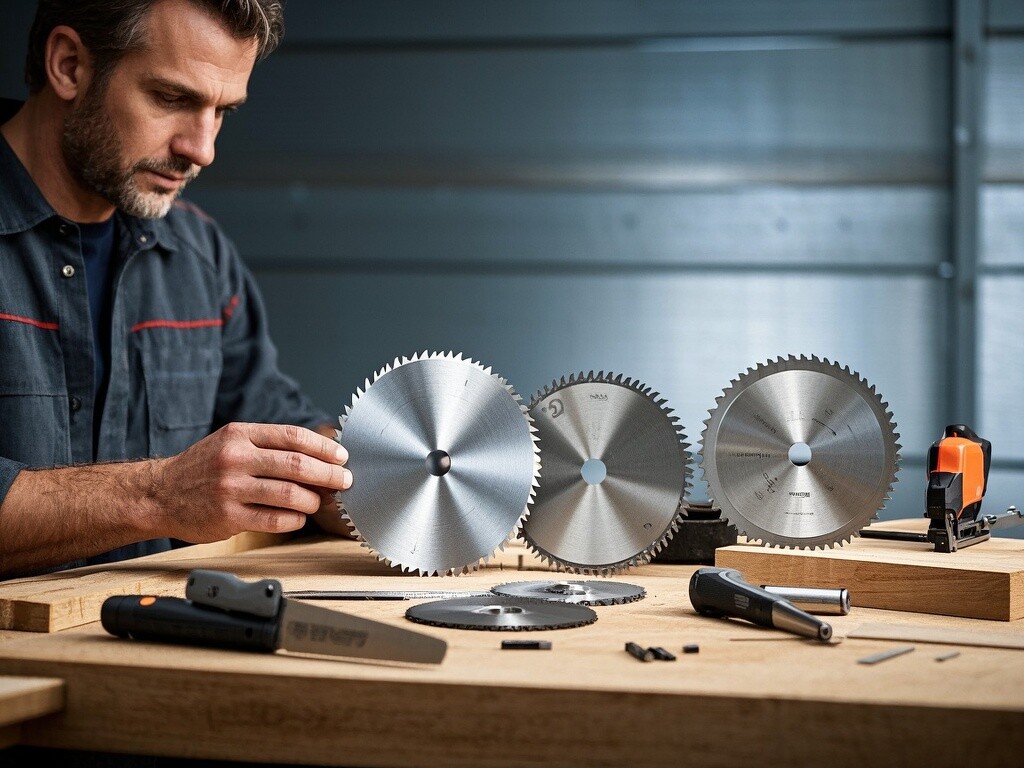
How to Choose the Right Saw Blade for Your Project?
Choosing the right saw blade can make or break your project. Whether you're a DIY enthusiast or a professional contractor, understanding the different types of saw blades, their materials, and applications is crucial. This guide will help you navigate the complexities of saw blades, ensuring you pick the best one for your needs.
Types of Saw Blades
Saw blades come in various types, each designed for specific tasks. The most common types include circular saw blades, jigsaw blades, band saw blades, and reciprocating saw blades. Circular saw blades are ideal for cutting wood, metal, and masonry, while jigsaw blades are perfect for intricate cuts and curves. Band saw blades are used for resawing and cutting irregular shapes, and reciprocating saw blades are great for demolition work.
Materials and Coatings
The material of the saw blade determines its durability and performance. High-speed steel (HSS) blades are affordable and suitable for general-purpose cutting. Carbide-tipped blades are more durable and ideal for cutting hard materials like hardwood and metal. Diamond blades are used for cutting concrete and stone. Coatings like titanium nitride (TiN) reduce friction and extend blade life.
Tooth Count and Configuration
The number of teeth on a saw blade affects the quality of the cut. Blades with more teeth produce smoother cuts, while those with fewer teeth cut faster but leave rougher edges. The tooth configuration, such as alternate top bevel (ATB) or triple chip grind (TCG), also influences the cut quality and blade longevity.
Application-Specific Blades
Different projects require different blades. For example, a crosscut blade is designed for cutting across the grain of wood, while a rip blade is for cutting along the grain. Combination blades offer a balance between the two. For metal cutting, a blade with a high tooth count and carbide tips is recommended.
Common Mistakes to Avoid
One common mistake is using the wrong blade for the material. For instance, using a wood-cutting blade on metal can damage the blade and the material. Another mistake is neglecting blade maintenance. Regular cleaning and sharpening can significantly extend the blade's life. Always ensure the blade is compatible with your saw model.
Industry Standards and Certifications
Look for blades that meet industry standards like ANSI (American National Standards Institute) or ISO (International Organization for Standardization). These certifications ensure the blade meets safety and performance criteria. Blades with CE marking are compliant with European safety standards.
Cost vs. Quality
While it might be tempting to go for cheaper blades, investing in high-quality blades can save money in the long run. Cheap blades wear out faster and may not provide clean cuts, leading to material wastage. High-quality blades, though more expensive, offer better performance and longevity.
Why Choose Us?
We offer a wide range of high-quality saw blades, foam guns, glue guns, and drill bits to meet all your project needs. Our products are sourced from trusted manufacturers and come with industry certifications. Contact us today to find the perfect tools for your next project.
Related Posts
- ▶ Dripless Dual-Cartridge Caulking Gun: Innovation for Multi-Material Applications
- ▶ Caulking Gun Size Guide: Matching Chaohui Tools to Your Project Needs
- ▶ Eco-Friendly Foam Gun: Durability Meets Sustainability for Long-Term Use
- ▶ Foam Gun: Precision Control & Waste Reduction for Professional Sealing
- ▶ Best Foam Gun for Professionals: Top 5 Picks in 2024
- ▶ How to Choose the Right Saw Blade for Your Project?
Send Us A Message
